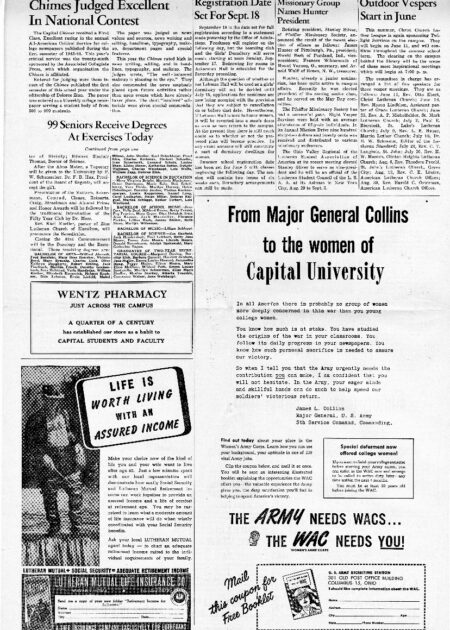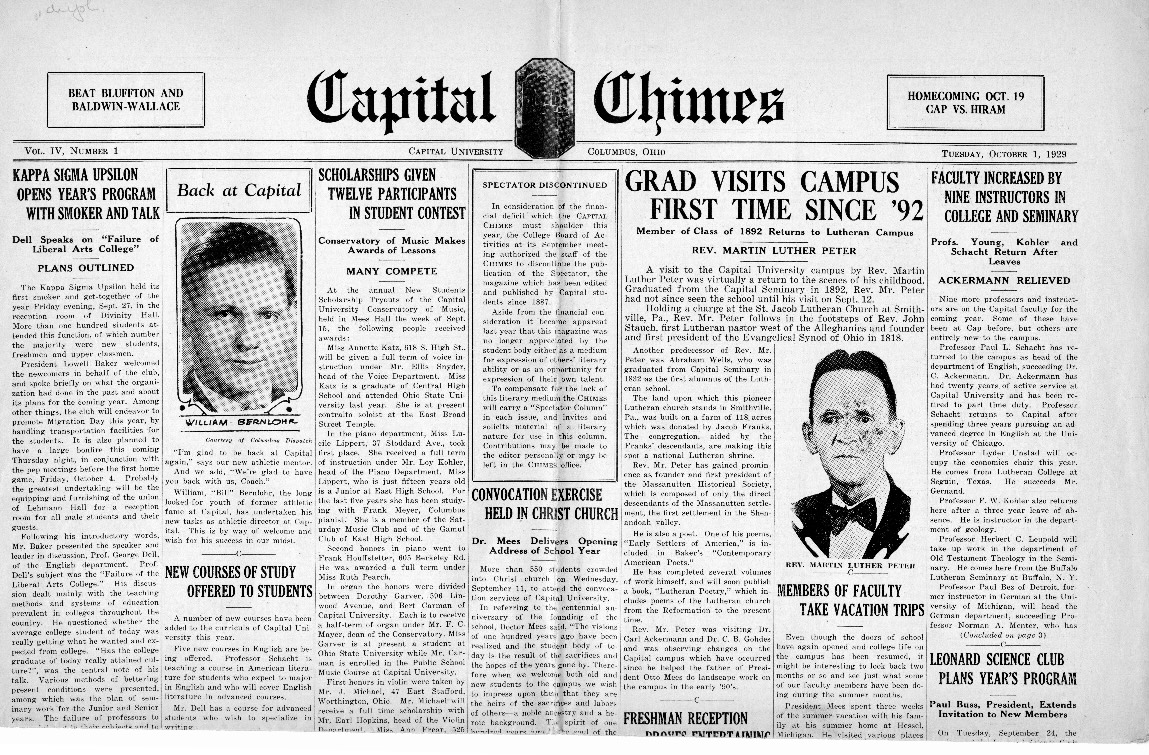The Chimes echoes through the passage of time. Historical issues of the Chimes can be found, labeled and stored in the archives, showing a chronicle of the university’s evolution.
The archives are in the basement of the Blackmore Library. The archives contain a collection of memorabilia and history of the university filed within the cabinets. They offer insight into what the university was once like, a direct line into the past.
There is a difficult and meticulous process in order to preserve these items.
Meghan Crawford, librarian and supervisor of the archives, said, “We need to assess and ensure our environmental conditions meet recommended standards, particularly regarding humidity and temperature levels.” Preservation is necessary to maintain the quality and life of the items.
Grant Witherspoon, student archive assistant, shared insight on the capabilities and the future of the archives.
“We have a really high tech new scanner that can scan [really well] so, in the future, we are going to try and scan up a lot of our collection for the internet,” he said.
Digging deeper into the archives reveals the history of the Chimes, containing articles dating back to the early 1920s. During this time, the primary way to get news was within the newspaper.

The Chimes’ 1920s editions were significantly larger than the newspapers today. The paper was of a surprisingly high quality, as this decade’s papers held up better than the later editions. The issues were only 4 pages long with 2 folds.
The pages were dense with hard-hitting journalism, packed to the brim with short articles to get the account across. Just on the first page there were 14 different articles.
Then, in the 1930s, the Chimes refers back to events in the 1870s as the ‘70s. It is difficult to fathom the casual mention of the 1870s in these articles.
The 1930s editions were sleek and clean; the lines were extremely crisp. Cigarette ads took up the majority of the pages, showing the growing popularity of cigarettes in this decade.
In the 1940s, it’s clear that there’s a fog in the air near World War II as the U.S. had just joined. Major General Collins took up a full section of the pages to direct conversation to the women of the university.
Collins said to the women of the university, “I tell you that the Army urgently needs the contributions you can make.”
In the 1950s issues, the pages were shorter and less condensed with information. The height of the pages were similar to what remains today. However, the pages did not hold up at all. The paper was dropping little sprinkles of stationery onto the floor.
In the 1960s, the issues were small; they were retro, organized and aligned. The pages held up well, even better kept than editions from previous decades. The pages were orange and closer to a square shape.
Something to note has to be the effect of inflation. At the time, bagels were $2.25 for a dozen. Articles discussing procrastination remain prevalent to students today.
During this time, the students were rioting against the proposition of raising the legal drinking age. Reporter Deb Rehl wrote, “it does not seem fair to force 18-year-olds to register for a draft as a privilege of adulthood; perhaps 18-year-olds are too young to vote.”
There were distinct similarities between the students in the 1960s and the students that reside at the university today.
The archives are full of rich history. Christopher Jacky, student archive assistant, has a clear love for the archives. He said, “My other big takeaway is that the archives are worth preserving and promoting. There are countless cool pieces down there, and I think that support for the archives is needed to preserve several pieces.”
On the Blackmore Library Instagram, there are “discovering archives” posts that regularly share finds within the file cabinets.
While the older editions of the Chimes live in archives, it’s clear it’s in safe hands with the staff at Blackmore.


